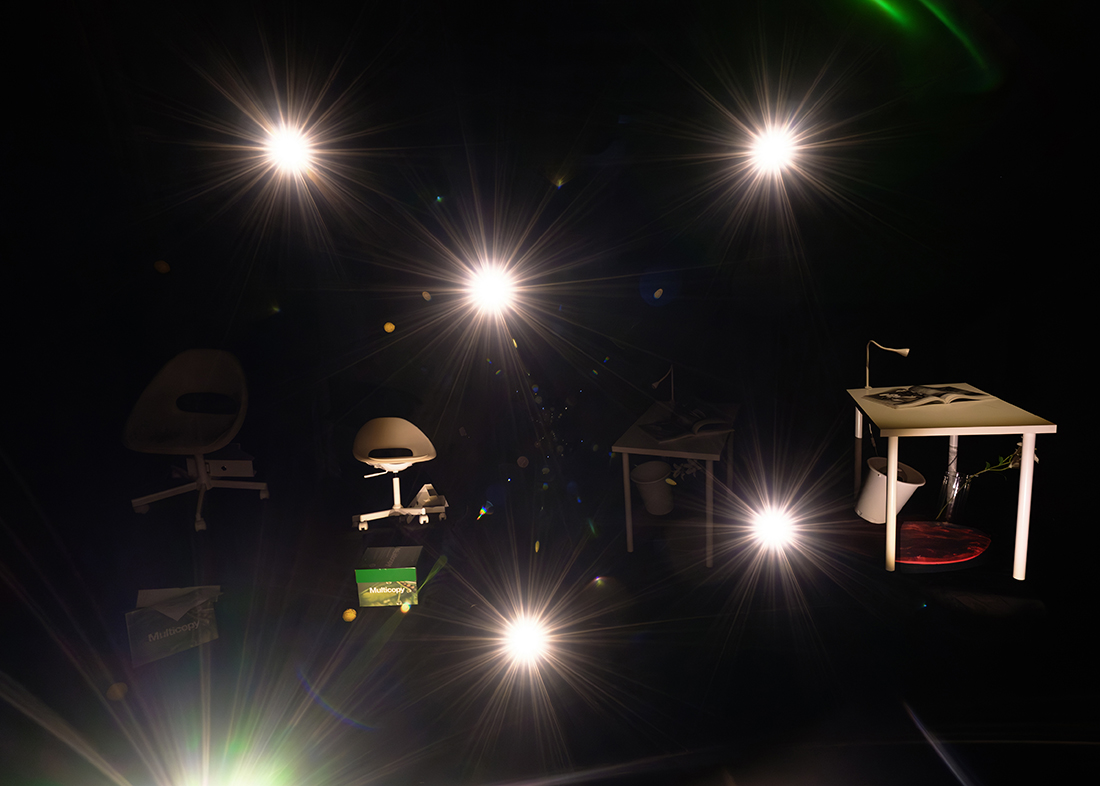
Peter Geschwind, Earthquake. From the series AFTERIMAGE, 2018–2021 © Peter Geschwind/Bildupphovsrätt 2025
Earthquake. From the series AFTERIMAGE, 2018-2021
Peter Geschwind
AV Technician Johan Larje talks about creating the lighting design for Moderna Museet’s exhibitions — and what it means to feel the light.
Runtime: 03:46
Johan Larje: Do you feel the light? Without light, the artworks wouldn’t appear as we intend them to here at the museum. The lighting design of an exhibition can elevate the works and make an entire space come alive. But how do we get there? How is the lighting concept for a room created?
Months before we stand here today, the selection of works for the exhibition is made. The planning begins — the architecture, the spatial design, the overall body of the exhibition. Then comes the build. Walls, pedestals, partitions. When the painters have applied their final coat and the paint is dry, installation begins.
Artworks in different materials — textile, photography, video, print, painting, sculpture — each with its own expression, height, and form. This is when I start lighting with my ears. My ideas and the means I use to reach the final result are shaped, in part, by the conversations around me — the small exchanges between colleagues as they work with the pieces. What do they see in the room?
As installation nears completion and the works are in place, I switch off the work lights that have dominated the space and turn on the fixtures that will now define it. For many materials, fifty lux is the target — a measure of how much light falls on a surface. The light must render colours faithfully and, hopefully, enhance the artwork.
From my lift, in a helicopter view of the room, I switch on and adjust one fixture after another. Trying angles, adding another spotlight — no, too many shadows. Filtering — perhaps a subtle blue gel to strengthen the tone of the light. Should it feel warm or cool? White walls. The light travels farther then, almost creeping away. Maybe tint the floor with warmer filters, focus the beam only on the work. Decision! Lighting design is all about decisions, I tell the lift.
A conservator enters to inspect a painting and switches on her work lamp on the floor. It spills onto a nearby sculpture — and suddenly I see a possible shadow — inspiration! But I need darkness to be able to see. ‘Lights out!’ I call. ‘I can’t see what I’m doing!’ (laughs) Backwards, but true.
When I’m happy with the direction of the lights, it’s time to program the values into the lighting control system. Before I begin, I take a break — my eyes need rest. When I return, I try to see the room as if for the first time.
My name is Johan Larje, and I am responsible for exhibition lighting design at Moderna Museet. I’ve held this role since the autumn of 2001. Over the years, I’ve had many rewarding encounters with artists — some with a clear vision of how their works should be lit, others who generously allow me to let the light carry my own touch.
And in the end, it’s you who see the result — and hopefully, you don’t think about the light at all, but about the art.
That said, one work in this exhibition challenges everything I’ve just told you. Peter Geschwind’s Earthquake.
Do you remember my opening question — do you feel the light? Here, the blinding light comes from within the work itself. Fixtures flash, making it hard to see the entire space — as if the furniture were shifting. A low-frequency sound deepens the experience.
What has happened here? Light and sound as storytellers.